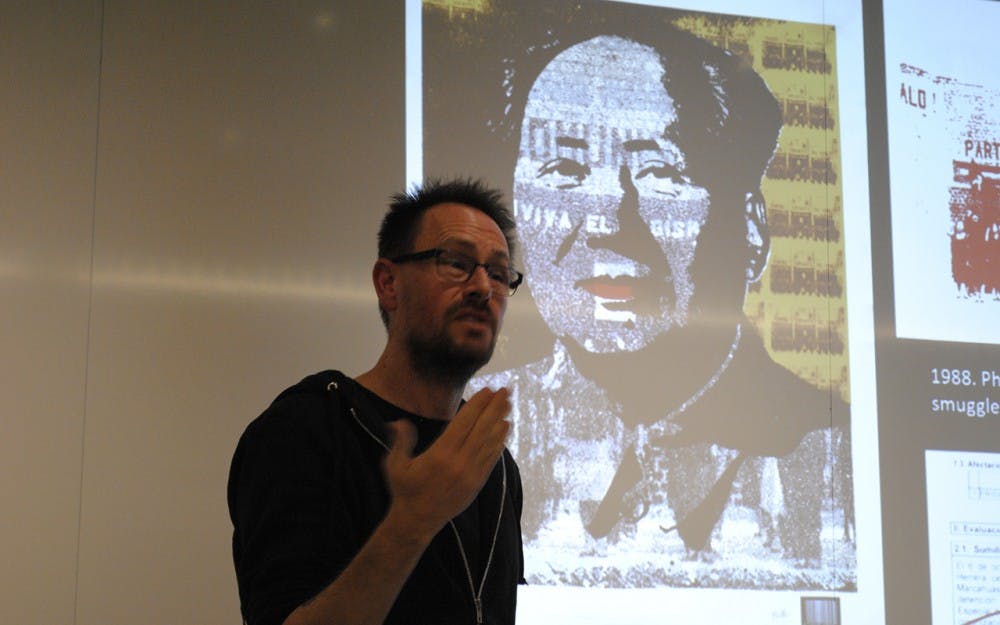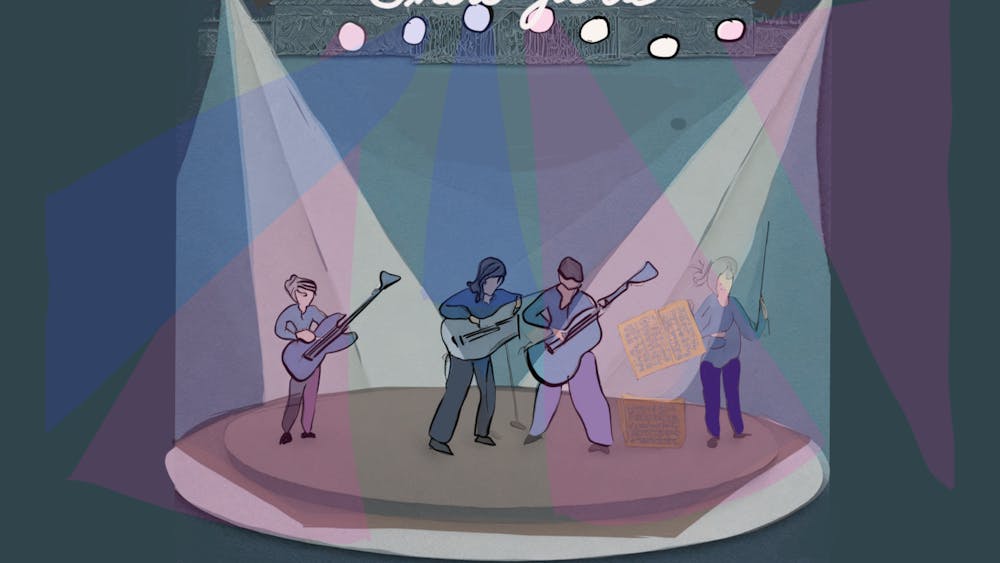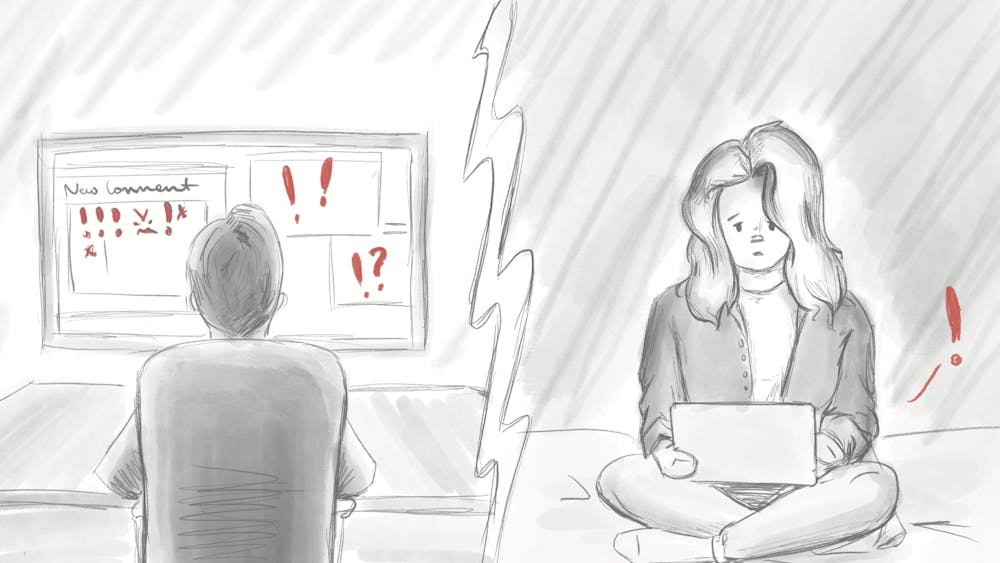Rather than an atmosphere filled with loud music or videos of rowdy crowds, Shane Greene began his talk on punk, pop and revolution in Peru with complete silence.
That silence filled the room as about 20 attendees viewed high resolution artwork and read the stories of punk groups and anarchists in Peru during the Cold War who were tortured, beaten and imprisoned.
Gardner Bovingdon, a professor in Eurasian studies at IU, moderated and introduced Greene as an associate professor and anthropologist at IU. Greene wasn’t just an academic, Bovingdon said, but also an organizer of rallies and conferences for causes he cares about.
“He’s not just a scholar of human rights but an activist as well,” Bovingdon said.
Greene recently released a book, “Punk and Revolution: Seven More Interpretations of Peruvian Reality,” in which he goes through what it was like in Peru during the 1980s. He said for punk groups in Peru the stakes were much higher than they were in the United States.
The example, what he called “Situation J” from his book, which Greene dwelled on was that of the image of Mao Zedong from the Chinese Communist Party. The image was created by the artist Alfredo Marquez. Marquez spent four years in prison for his portrayal of Mao with red lips.
The image had various meanings, and the interpretations reached by artists like Marquez and government officials was radically different.
“This goes beyond just an artistic representation,” Greene said.
The controversy surrounding the image was such that Peruvian communists, who were known by the name Shining Path, were furious at the insult to someone they saw as a leader and icon, Greene said. And the militants were even more furious with Marquez for that artwork because it featured repeated images of imprisoned, female Shining Path supporters in the background, which seemed to further degrade their cause, Greene said.
These repeated images, combined with the red lips given to Mao, created a further gender dynamic altering the perspective and creating more ambiguity even as the words “Viva el Maoismo” — “Long live Maoism” — gives another twist to the image, Greene said.
“It was precisely its ambiguity, which made it dangerous,” he said.
He continued by pointing out the consequences of artwork charged with political tones. Marquez, who is still alive and an artist in Peru, cannot visit the United States. Greene said Marquez is still waiting more than a year later for his visa application to be processed and he doubts it ever will be approved.
Punk and pop movements, especially in Peru, had real risk for people, and that risk often resulted in prison, yet Greene said his book is one of the few works to look at these urban anarchists and their own struggles as they push back against far-right governments and far-left militants.
“It’s both what people want to risk and what comes out of that risk,” Greene said. “It’s a story of punk you haven’t heard before.”






